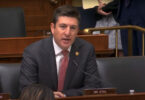Today Federal Reserve Governor Lael Brainard spoke about central bank digital currencies (CBDC), stating the use of a foreign CBDC for cross border payments is one of the drivers behind the Fed’s interest. Other key takeaways from her Consensus talk were continuing reservations about stablecoins and additional regulation of crypto-assets using a framework shared across regulators.
Cross border CBDCs
In her prepared comments, Brainard mentioned cross border usage of a foreign CBDC as one of four areas that are “sharpening the focus on CBDCs”. The others were stablecoin risks, the move away from cash to digital, and the need to address the unbanked and underbanked highlighted by pandemic government payments.
Talking about a foreign CBDC, she said, “to the extent that it’s designed for prominent use in cross border payments, that does potentially have significant effects across the globe. So it is very important for us to follow many central bank’s progress on CBDC closely, including China.”
On the one hand, we’d observe that China continues to state that the digital yuan is primarily for domestic use. However, at the same time, it is conducting cross-border trials with Hong Kong as well as Thailand and the UAE.
Because of the dollar’s international role, Brainard believes the United States needs to stay ahead of the curve in terms of research and policy setting.
Stablecoins
Turning to another of the drivers behind a CBDC, both in her prepared statement and in response to questions, Brainard highlighted stablecoin risks. She noted how each stablecoin is so different with the variety of linked assets, rules over redemption and the issuer is sometimes not liable. In her view, stablecoins risk fragmentation, lack consumer protection and present financial stability risks because of potential run-like behavior.
She referred to the nineteenth century when private money proliferated and was “notorious for inefficiency, fraud, and instability in the payments system.”
When asked about the potential for payment competition with cryptocurrencies, her response seemed to focus more on competition. Rather than cryptocurrencies, her answer could be interpreted as a two-tier system with a CBDC at its heart. “I do believe in the context of where you maintain the role of safe central bank money as the foundation of the payments system, there’s a lot of room for competition and innovation to flourish,” said Brainard. She highlighted that private sector participants could leverage innovations such as distributed ledger and smart contracts.
The evolution of regulations into a ‘shared framework’
Moving on to regulating, Brainard reiterated multiple recent statements from legislators about the need to have a “shared framework to make sure that that regulatory perimeter is adequately expanded.” We previously reported on the OCC talking about coordinating with the Fed and FDIC. Treasury Secretary Yellen hinted about multi regulator coordination. And Congressman Patrick McHenry introduced a bill requiring the SEC and the CFTC to set up a joint working group to regulate digital assets.
Brainard noted how crypto-assets risks are different from traditional assets with the potential for attacks on ledgers, wallet providers, and keys, with potentially no recourse.
The Fed Governor emphasized that the Fed’s focus is on where banks intersect with crypto-assets. In contrast, the bulk of the discussions will sit more with market regulators.






